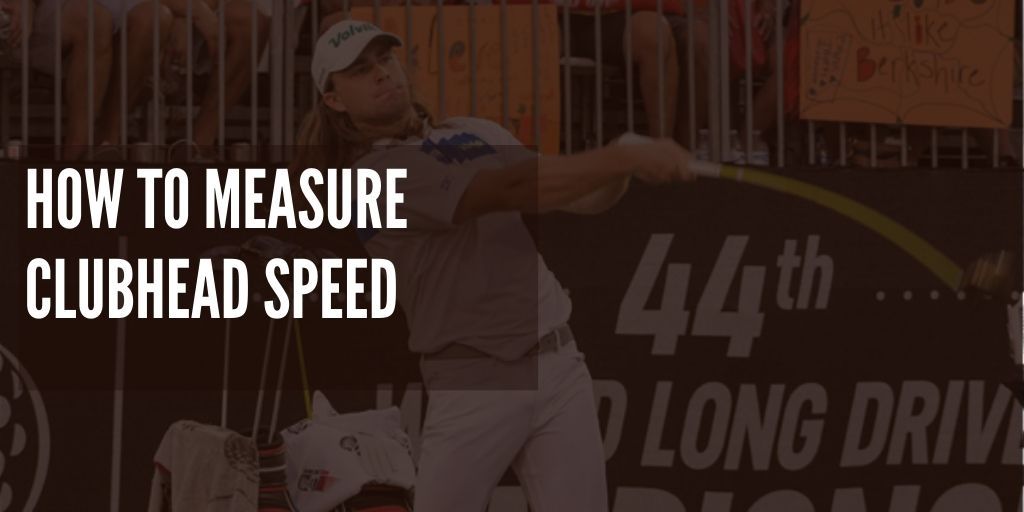
Clubhead Speed is a big topic in golf recently. Bryson DeChambeau’s body transformation was all about chasing speed, and virtually all major equipment manufacturers feature it within the marketing materials for their newest clubs. It’s easy to understand why; speed equals distance. Even the recreational golfer will benefit from a bit more speed, but first, they will have to know how fast they are swinging in the first place. In this article, we’ll discuss some different methods for measuring clubhead speed.
Inexpensive Options
While the Trackman costs are out of reach for most, personal launch monitors starting at around $200 are great options for those looking to measure their clubhead speed. Several of these systems have been reviewed on the site before, with the more expensive options offering more features and data points. While these products aren't perfect, they're actually very close to what you'll see on enterprise-level launch monitors. More importantly, if you use the same monitor consistently, you'll benchmark yourself over time if you are trying to work on adding clubhead speed.
Top Pick: PRGR Launch Monitor
The PRGR launch monitor is the "sleeper hit" of 2020 in the golf world. This Japanese launch monitor that was repurposed for the US market has been selling like hotcakes since it was released, and for a good reason. In our review, we were shocked at how accurate the PRGR was on measurements like clubhead speed, ball speed, and distance.
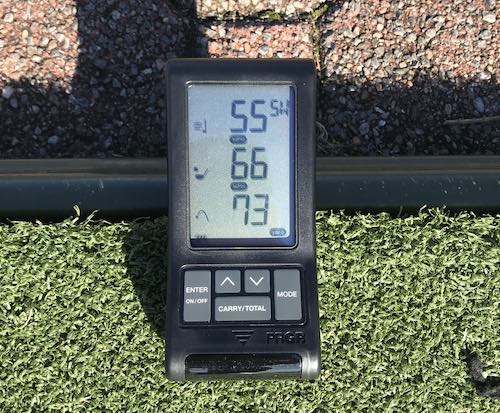
Most importantly, the PRGR does not require you to hit a golf ball to measure your clubhead speed. So it has become a popular training companion for those using SuperSpeed Golf, a training aid that helps golfer increase their clubhead speed. At $199, it's the best overall value for those looking to measure their clubhead speed, and you'll also get the benefit of being able to measure ball speed, carry yardages, and total yardages.
Purchase Link
Budget Option: Sports Sensor Swing Speed Radar
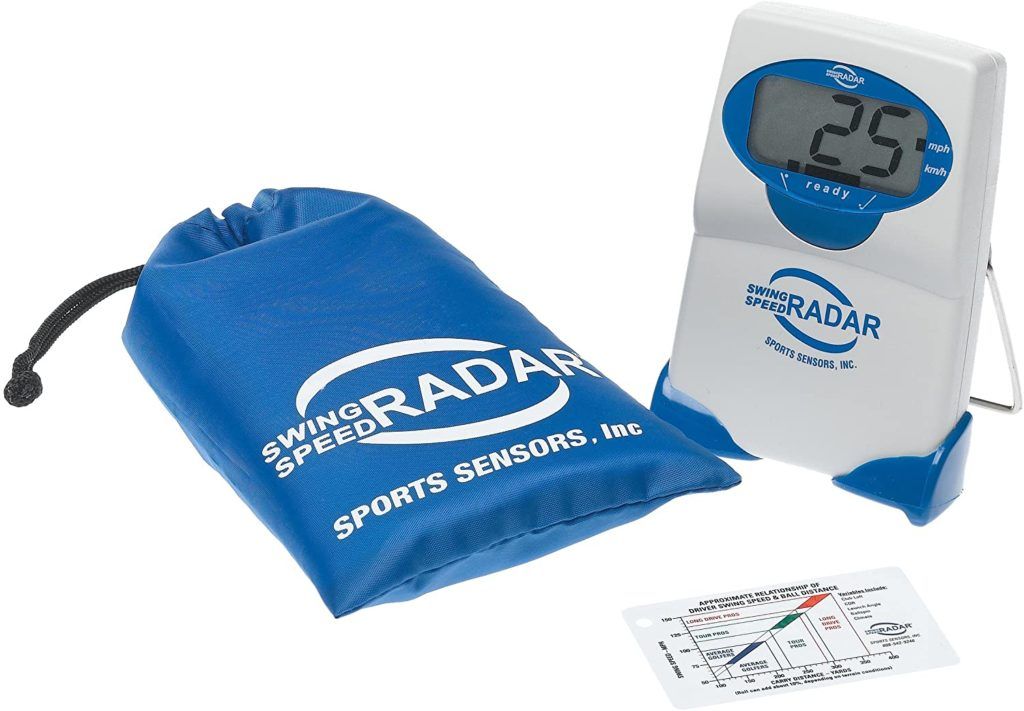
If the PRGR is too rich for your blood, then the Sports Sensor Swing Speed Radar is another great budget option. At just over $100, it will reliably measure your swing speed. The downside is that it is the only measurement the device provides. So if you're looking to get any feedback on how far you are hitting the ball, or your ball speed (a more reliable metric for clubhead speed gains), you should consider another option.
Honorable Mention: Swing Caddie SC200+
The Swing Caddie SC200 is the best-selling personal launch monitor of all time. It's compact, accurate, and packs a great set of features. This year, Swing Caddie released the upgraded SC200+, which now offers a practice mode that measures clubhead speed without having to hit a golf ball.
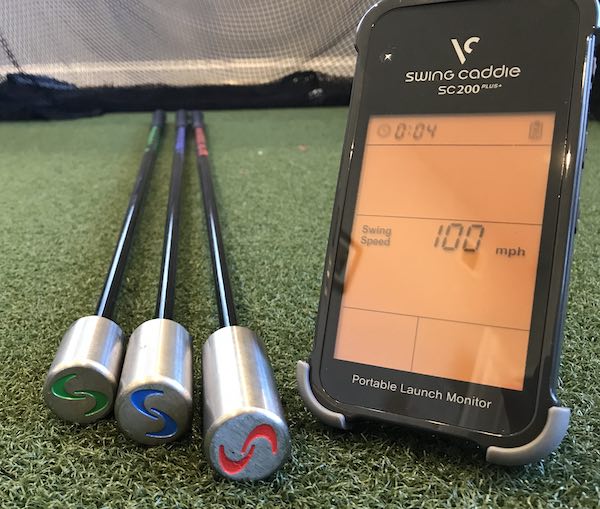
At $289, the SC200+ is a more polished product compared to the PRGR. It comes with a remote control, slicker interface, and a few built-in practice challenges, as detailed in our review.
Purchase Link
If you're interested in launch monitors that will display clubhead speed and offer more advanced features, I recommend checking out the Swing Caddie SC300 or the Rapsodo MLM.
The Best Swing Speed Accuracy Comes at a Price
When you read articles about Bryson’s speed exploits or look up the PGA tour averages for clubhead speed (113.8mph), those numbers come from the best measurement technologies available. This tech is open to regular golfers as well, but it certainly comes at a price.
The GCQuad from Foresight Sports is one of the gold-standard indoor launch monitors in the industry and starts at $11,000, and the total cost could be almost double that when adding in software and other equipment to utilize it fully. The user will get a dozen data points for this price, including measuring clubhead speed (after purchasing the $4000 club add-on).

The GCQuad is an optical system utilizing four high-speed stereoscopic cameras to gather visual data used to compute performance numbers. While the price keeps a system like the GCQuad out of reach for the average golfer, the data accuracy makes them ideal for club fitters and some instructors. It’s possible to book a session with a club-fitter to get this data for yourself, even if you are not planning on purchasing new clubs. For example, in Los Angeles, True Spec Golf offers a 75-minute gap analysis session for $125, going through all the clubs in your bag. For golfers who want the most accurate club speed data without purchasing equipment for themselves, this type of service might be the best option.
Besides optical systems like the GCQuad, other launch monitors like the Trackman utilize radar to collect information on the club and ball. The Trackman monitors the full ball flight up to 400 yards accurately, making it the favorite system for tour players practicing on the range.
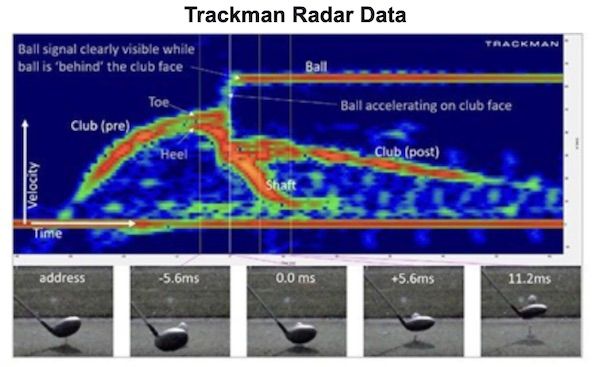
No Tech Clubhead Speed Estimates
For golfers who don’t have access to the technology above, you can get a reasonable estimate of clubhead speed out on the range by doing a bit of math. The first estimation method is used for the driver, the club we’re usually most interested in knowing its speed.

Driver Method
After warming up, hit a series of shots with your driver, noting down each carry distance (the carry being where the ball lands, not how far it rolls). You’ll only want to count the solid strikes and eliminate the severe mishits, so plan to hit at least twenty drives to get a large enough sample. Additionally, range yardage markers can be inaccurate, so using a laser rangefinder to determine distances will improve accuracy. Once you have ten or more solid shot carry distances, calculate the average distance of these drives. Dividing that average distance by 2.3 should give you a decent idea of your clubhead speed plus or minus a few MPH. The 2.3 comes from the average yard per mph of clubhead speed for amateur male golfers; a number called driving efficiency. Keep in mind, though, that driving efficiency can vary from golfer to golfer and equipment.
150 Yard Club Estimated Swing Speed
An additional option for estimating a speed range for clubs besides your driver can be done by determining which club in your bag you carry 150 yards on a solid shot. Based on that club, find your estimated speed range in this chart.
3 iron/hybrid or fairway wood60mph or less4 iron60-74mph5 iron75-84mph6-7 iron85-93mph8-9 ironAbove 94mph
The somewhat vast differences in speed are due to differences in iron lofts and swing types impacting the shot’s carry distance. This type of formula is used in most online club-fitting tools to recommend a shaft flex for irons.
Resources for Increasing Clubhead Speed
If you're interested in measuring your clubhead speed, likely, you're also on a quest to swing faster.
As said above, the obsession over speed data is about the valid belief that increasing speed will improve your golf game through increased difference. Because of this, the main reason any of us are likely interested in knowing our swing speed is to know our starting point for improving it. In this article for Golf.com, World Long Drive Champion Kyle Berkshire shared a few tips he uses to achieve a 150mph+ clubhead speed with his driver. The advice I’ve put into practice for myself is the idea of a “driver day,” basically a practice session focused only on swinging the driver as fast as possible as many times as you can without worrying about the resulting shot. By doing this, you’re training your body to swing more quickly, exercising the muscles and coordination necessary to increase clubhead speed. Be sure to start slow with this practice and work your way up to prevent injury.
Like any physical activity, improving your overall fitness is another way to gain the ability to swing faster. One program to consider is Fit For Golf, a fitness training service designed for golfers. Additionally, the SuperSpeed training regime has shown impressive results in increasing clubhead speed for golfers across all levels.
Do you have a tip you’d like to share for increased clubhead speed? Join us over on the Practical Golf forums to discuss.
We care about the protection of your data Read our Privacy Policy